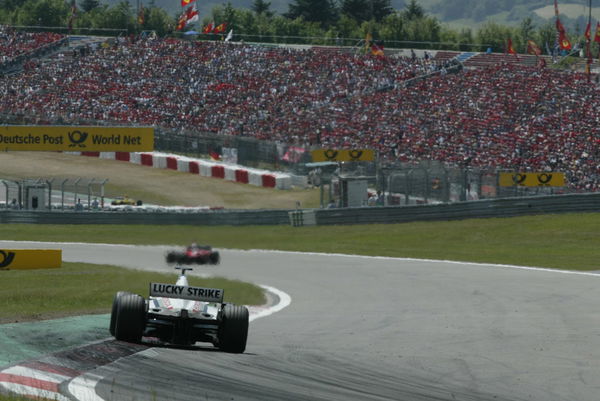

As Formula 1 continues to expand its reach, its events with the greatest traditions have found themselves increasingly under threat. History alone does not keep a race on the calendar. Even the likes of Monza, Silverstone and Spa have found it difficult to keep themselves on the calendar. Liberty Media has vowed to expand to newer places increasing the maximum capacity of the F1 calendar to 25. In 2020 itself, F1 moves to a record 22 race calendar with two new venues being added: a brand new circuit in Hanoi, Vietnam and the return of the iconic Zandvoort. This brings forth a serious question: in its mad rush to milk money from every single avenue it can (with hosting Grand Prix in wealthy areas having little to none Motorsport heritage being the latest one), is the circus justified in sacrificing genuine tracks that have provided good racing? To find an answer to this question let us have a look at a few lost F1 circuits that fell by the wayside.
KYALAMI
ADVERTISEMENT
Article continues below this ad

Kyalami translates to ‘my home’ in Zulu, truly was that to African motorsport, having hosted the South African Grand Prix between 1967 and 1993 save for a 1986-91 hiatus.
Early events were hosted by East London, and the final two by Kyalami’s ‘mirror’ circuit, but the original Kyalami layout, comprising a long downhill straight, tricky Esses and fast, flowing corners, remains iconic.
The event was generally staged early in the season – once on New Year’s Day – thus providing winter respite for northern hemispherians. No world championship can exclude an entire continent, and South Africa alone has the requisite infrastructure and F1 culture in its region.
Kyalami, one of the lost F1 circuits, is being revamped to F1 standards, but a grand prix requires enormous political will and realistic economic demands – without which it is unlikely to happen.
IMOLA

Of course Imola will always have a chequered history, thanks to the dark weekend of 1994 that claimed the lives of Roland Ratzenberger and Ayrton Senna. Chicanes were thus installed before the old first turn at Tamburello, and the climb to the top of the hill at Tosa for 1995.
But unlike many modern safety revisions, they didn’t spoil the high-speed nature of the circuit, and the ‘deep-breath’ run from the left-hander at Piratella to the insanely fast downhill entry to Acque Minerali remained a mighty challenge until the circuit fell off the calendar after 2006.
It hosted European F3 in 2014, but sadly the circuit’s world championship moments are limited to superbikes these days.
However threats to Monza saw Imola suddenly becoming a viable alternative but if current rumours are to be believed, a new financial legislation passed at the beginning of the year dictates the venue for the Italian Grand Prix to be Monza only. Imola is not just any one of the ordinary lost F1 circuits, it is one of the most legendary circuits.
NURBURGRING
Famously known as the green hell, the track of Nurburgring was among the most dangerous tracks on the F1 calendar of the past. It is still active with Sports Car manufactures using the track as a benchmark setter. The circuit was extremely long – 22 kms with 160 corners, fast and extremely tricky to master. With the coming of 1970s, F1’s security mandates were improved and as a result, changes were made to the circuit to make it more safer. However it was in 1976 that it caught Niki Lauda in its trap. The Austrian suffered with severe burns over his body after a crash here. It took him a while to return to racing and if not for his fierce spirit, it would’ve been even longer.

Over the years the 22 kms long circuit was cut down even more from time to time to accommodate the growing demands of the sport. In 2007, it was announced that it will alternate with Hockenheim to host the German Grand Prix. However owing to multiple issues, its contract was not renewed post 2014. Now it remains as F1’s most dreaded circuit with challenges that are far more enduring than the ones imposed by newer circuits like Baku. Whether F1 moves here again or not, is a mystery. But considering that even Hockenheim has been dropped off now, the fate of German Grand Prix in altogether hangs in the middle.
WATKIN GLENS
Initially known as the home of the United States Formula One Grand Prix, the circuit was removed from the calendar after it organising the Grand Prix for 20 years straight from 1961 – 1980. Now it stands as the Mecca of North American Road Racing, with popularity incredibly high among fans and drivers alike. However, Formula One continues to ignore it and despite its hunt for a second grand prix in the United States, it pays no attention to this track.

The circuit was hugely popular, largely responsible for the sport’s presence in the United States. Fans flocked the circuit in huge numbers. Drivers also loved this track considering the prize money here was more than any other race on the calendar. But the fast corners were very dangerous and with the faster cars of the 1970s, accidents were quite a few.
The race was removed in 1981 after the organisers failed to pay their debt and now despite the situation being much better, F1 has no intention of returning to this iconic circuit.
ADVERTISEMENT
Article continues below this ad
BRANDS HATCH
While Liberty Media continues its hunt for more and more races in the United States, it is simply blind to the popularity of the sport in the United Kingdom, where more than a single race makes the most sense. The Brand Hatch was a circuit which was capable of matching Silverstone in terms of fan popularity. It hosted the British Grand Prix for the first time in 1964 and alternated with Silverstone until 1986. Unlike the circuits of yesteryears which were removed because of long layouts, this particular circuit was extremely small for the growing pace of the F1 cars making it very cramped.

ADVERTISEMENT
Article continues below this ad
Despite that, the circuit had many unique and iconic corners. It had an extremely steep downhill right hander at the end of the pit straight for which it was very popular for. However, owing to the nature of the circuit, it might never return on the F1 calendar.
ADVERTISEMENT
ADVERTISEMENT
ADVERTISEMENT
ADVERTISEMENT

